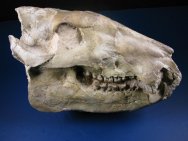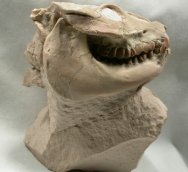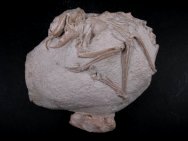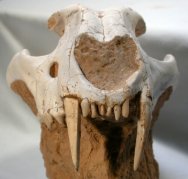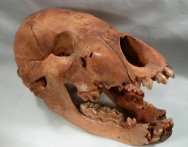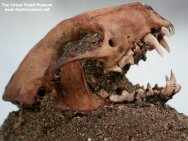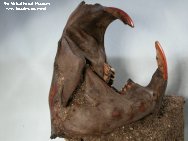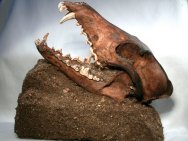Mammalian Fossils
|
Mammals evolved from synapsids (also called mammal-like reptiles, but are better referred to as stem-mammals, and are not reptiles). Dimetrodon is a synapsid example from the Permian. Mammal evolution was a gradual, extended process that spanned some approximately 70 million years, from about the middle Permian to the Middle Jurassic. By the middle Triassic, many animals had appeared that looked like mammals. Hadrocodium wui was a basal mammal species that lived during the early Jurassic; it was discovered in the famous Lufeng Basin in Yunnan Province, southwestern China. While Hadrocodium did not have all mammal characteristics, it did have a separate jawbone, large brain, and a sophisticated hearing. It weighed a miniscule two grams. Whether Hadrocodium was warm- or cold-blooded remains in dispute. It co-existed with several other primitive mammals with much larger body size. | ||||||||||||||||||||||||||||||
Fossil
Museum Navigation:
Home Geological Time Paleobiology Geological History Tree of Life Fossil Sites Fossils Evolution Fossil Record Museum Fossils |

